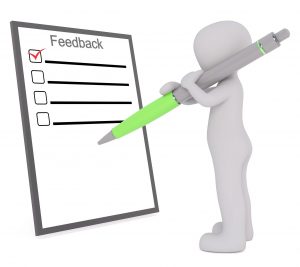On a practicum visit last semester, I was introduced to this TED talk by Tim Urban. Funny, exceedingly accurate and very well illustrated, it made me ponder my own struggles with procrastination and those of others, including my students. I highly recommend you watch the video if you have the time.
A (very) brief summary for those who didn’t watch the video:
Urban describes the brain of a procrastinator as having parts: the Rational Decision Maker and the Instant Gratification Monkey. The Rational Decision Maker has all the intentions of doing work to meet deadlines, but the Instant Gratification Monkey interrupts and always brings the person off task down a spiral of useless YouTube videos. When the deadline has approached, the Panic Monster steps in and scares everyone. The Instant Gratification Monkey runs away and the Rational Decision Maker is put into overdrive to complete all the tasks necessary to make the Panic Monster leave.
Don’t you wish you had watched the video now? 🙂
Experiences with Monkeys, Monsters and the Student:
I am a self-proclaimed self-regulated person: I set goals to meet deadlines, I plan how I will achieve these goals, and I reflect once the process is over on how I could improve next time. The most important point in this process is the plan. My plans consist of two strategies: break the task into smaller units with individual deadlines, and assign each deadline a reward. This system allows me to combat my Instant Gratification Monkey because I consistently have gratification waiting at the end of a goal, along with the immense feeling of satisfaction at completing a goal. Some rewards are small (watching an episode of The Office or eating some Ben & Jerry’s ice cream) while other rewards are large (going out with friends for the evening or going away for the weekend). These rewards work sometimes, but frequently the Instant Gratification Monkey strikes and I’ll be up watching cat videos all evening.
I bring up my own struggles because the Instant Gratification Monkey plays a role in all of our lives. No one is immune to the Instant Gratification Monkey and if you claim you are, you are just lying to yourself. Some people can combat the monkey better than others depending on their motivation and self-regulation. My question is: are adolescents more prone to give in to the hands of the Instant Gratification Monkey? Adolescents have less experience dealing with deadlines, focus on extrinsic rewards much more heavily than adults do, and are experiencing information, media and entertainment instantaneously at all hours of the day.
The skills that I use to combat the Instant Gratification Monkey are self-regulation skills. Time management is a key skill that many people I know and have interacted with fail to have, all claiming that it is a skill that they were not taught in school. I think it is more important now than ever to teach our students about time management. If gratification is frequently at our finger tips, how can we ever be effective learners or workers?
The future of procrastinators:
Urban’s final comments in the video were about two types of procrastination: deadline versus non-deadline. When people procrastinate without deadlines, people watch their life go by waiting for them to participate. This has to do with a person’s motivations; those that are intrinsically motivated do not procrastinate on life, they live it to its fullest. My hope is to instill intrinsic motivation in the classroom as well in the lives of my students, so that our future is full of life go-getters who only give in to the Instant Gratification Monkey to procrastinate deadlines, not life.
Urban, T. (2016, Feb.) Tim Urban: Inside the mind of a master procrastinator. Retrieved 10 Jan 2017 from https://www.ted.com/talks/tim_urban_inside_the_mind_of_a_master_procrastinator


 One part of my inquiry is about how to implement self-regulated learning skills and study strategies into my inquiry. Prior to research, I decided that there are three possible ways: a lecture on the skills, incorporating the skills into assignments, and as supportive workshops throughout a year. I am most curious about incorporating skills as assignments as I believe that you learn by doing, and what better way to learn skills than incorporate them into the curriculum. While I could not find any research that talked about the benefits of this method, Zepeda and Richey’s research outlined below is representative of incorporating skills into work in the sciences.
One part of my inquiry is about how to implement self-regulated learning skills and study strategies into my inquiry. Prior to research, I decided that there are three possible ways: a lecture on the skills, incorporating the skills into assignments, and as supportive workshops throughout a year. I am most curious about incorporating skills as assignments as I believe that you learn by doing, and what better way to learn skills than incorporate them into the curriculum. While I could not find any research that talked about the benefits of this method, Zepeda and Richey’s research outlined below is representative of incorporating skills into work in the sciences. A large component of self-regulated learning is self-awareness in one’s strengths, weaknesses, and plans. While trying to find ways to encourage self-regulated behaviors that were easily monitorable, I stumbled across a research paper: The Effect of Reflective Science Journal Writing on Students’ Self-Regulated Learning Strategies by N. Al-Rawahi and S. Al-Balushi.
A large component of self-regulated learning is self-awareness in one’s strengths, weaknesses, and plans. While trying to find ways to encourage self-regulated behaviors that were easily monitorable, I stumbled across a research paper: The Effect of Reflective Science Journal Writing on Students’ Self-Regulated Learning Strategies by N. Al-Rawahi and S. Al-Balushi.